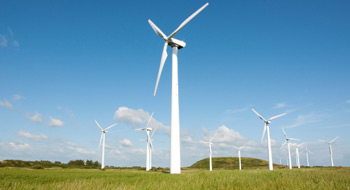
Green investments help the planet and make sense for pension funds. So why are allocations so low?
Pension funds have the potential to play an important role in financing green initiatives, such as renewable energy, clean tech and transit. A 2014 Ceres report, Investing in the Clean Trillion: Closing the Clean Energy Investment Gap, indicates that, in order to limit global warming to 2°C above pre-industrial levels, the planet needs to invest an additional $36 trillion through 2050 in sustainable businesses involved in energy efficiency, clean fuels and low-carbon transportation as well as those that provide adaptive solutions to climate change. Pension funds, more than any other investors, are uniquely positioned to close this clean energy investment gap.
Barriers to Investing
Many Canadian pension plans consider the transition to a low-carbon economy a priority and have developed proxy voting guidelines and corporate engagement strategies to further those goals. Nearly half of Canada’s pension assets are managed according to responsible investment criteria, according to the Canadian Socially Responsible Investment Review 2012.
Yet, in its 2011 working paper, “The Role of Pension Funds in Financing Green Growth Initiatives,” the OECD reports that the asset allocation of pension funds around the world to green investments is low. “The key to increasing pension fund allocations in this space is to make sure that green investments are competitive on a risk/reward basis,” the paper notes. For example, many green investment vehicles are illiquid and small. Small deal size isn’t cost-effective for pension funds, as they need to do due diligence on all deals—and the costs of researching small and big deals are the same.
Another barrier cited by the paper is unsupportive environmental policies. Many green investments aren’t competitive due to fossil fuel subsidies and un-priced carbon externalities (i.e., costs that aren’t reflected in market prices, such as social and environmental impacts). In 2011, the Canadian government spent 4% of its revenue on fossil fuel subsidies, says the IMF.
Institutional investors collectively manage more than $75 trillion globally, and pension funds represent nearly one-third of those assets. That’s a significant pool of capital. Yet, according to a 2012 OECD working paper, “The Role of Institutional Investors in Financing Clean Energy,” less than 1% of pension assets globally were allocated to clean energy infrastructure projects.
Greener Pastures
Green bonds are emerging as a promising way to provide large pools of capital to support investment in green initiatives. This January, Export Development Canada (EDC) issued its first green bond. The AAA US$300-million issuance was sold out in 15 minutes and oversubscribed by $200 million. The EDC plans to issue more green bonds to help mitigate climate change with clean tech and improved energy efficiency initiatives. And Ontario—the first province to issue green bonds—will use its bond proceeds for transit projects and infrastructure.
In 2013, more than $10 billion in green and climate bonds was issued globally. And almost $20 billion in green bonds has been issued so far this year, according to the Climate Bonds Initiative (an international not-for-profit).
But green bonds aren’t the whole story. Canadian pension plans are world leaders in direct investment in infrastructure and other projects, but that investment isn’t necessarily green. This may be changing, though. In 2013, the Caisse de dépôt et placement du Québec bought half of Denmark-based Dong Energy’s 50% share in London Array 1, the world’s largest offshore wind energy project. Pension funds are increasingly aware that mitigating risk and recognizing opportunities related to climate change are key parts of their long-term investment strategies. Reducing high-carbon investments and upping green allocations may be the best solution for them.
Deb Abbey is CEO of the Responsible Investment Association.
Get a PDF of this article.
